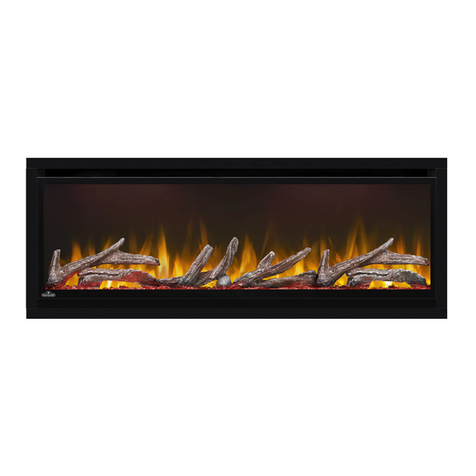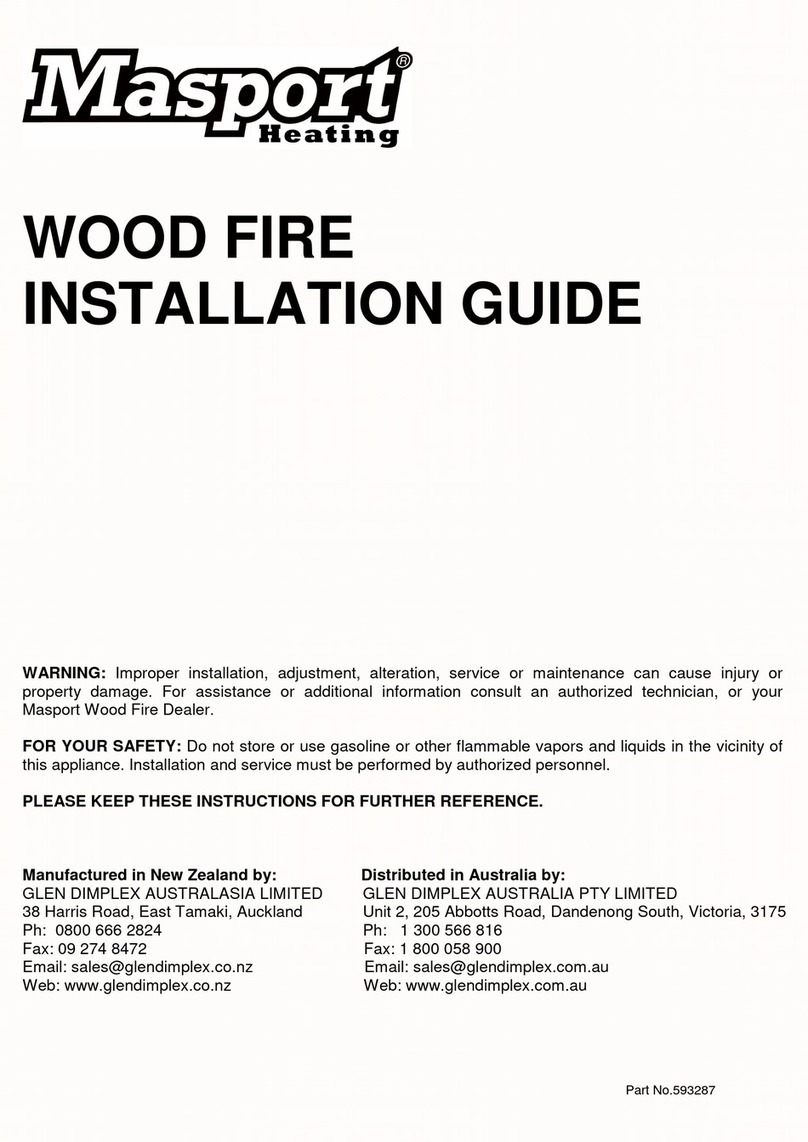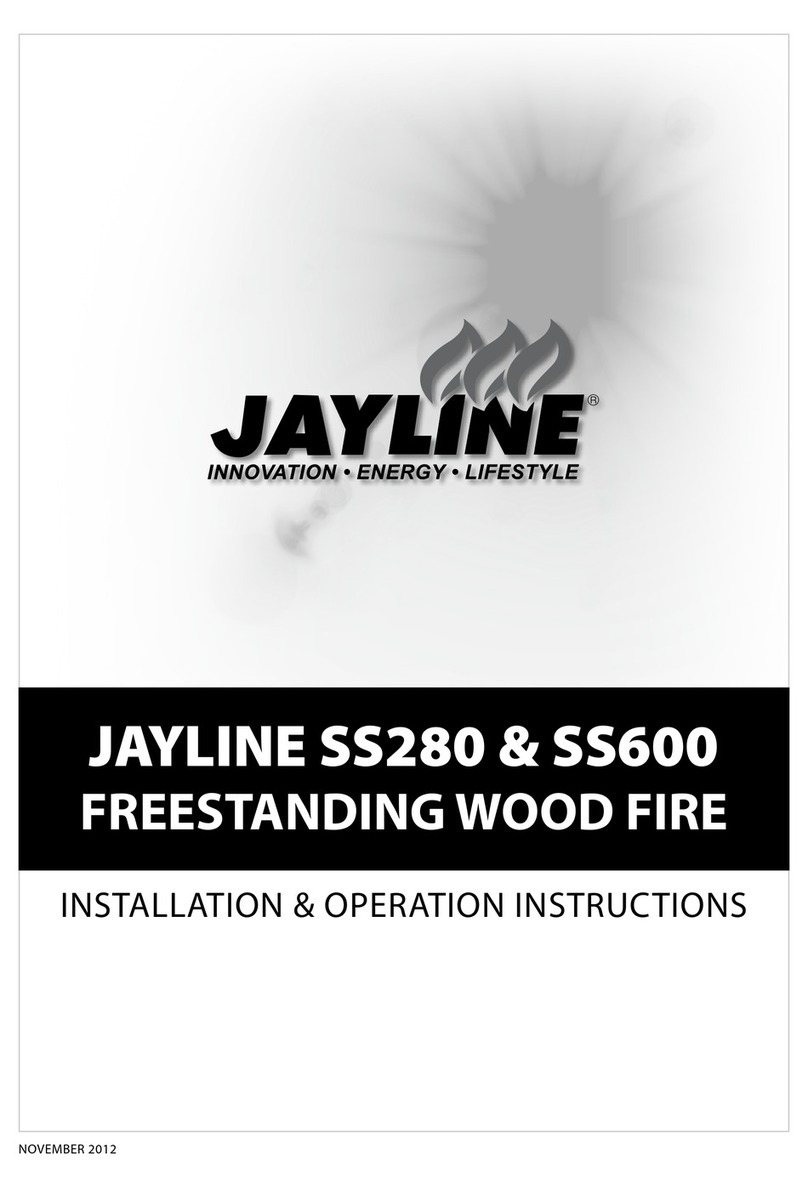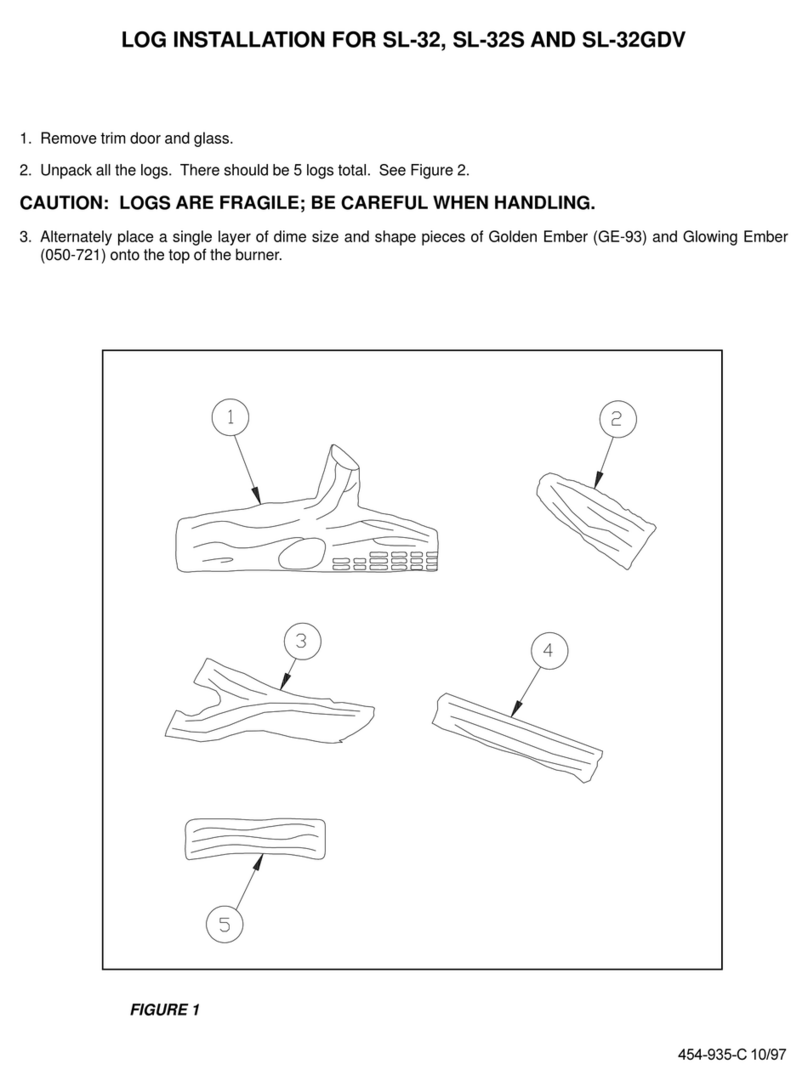Installation and Operating Instructions Reference: Casttec Firebox INSET version 5 January 2011
6
CHECK THE INSTALLATION !
Once installed, light the fire, demonstrate it to the householder and check that:
•It burns controllably and does not emit fumes to the room
•The route for gases from the stove to the chimney terminal is completely airtight, unobstructed and able to be swept.
•The entire construction is of durable fireproof materials.
•The flue presents a draught in use of at least 12Pa
LIVING WITH YOUR STOVE
Every fuel, chimney and condition of use is different. Only experience will show which the best settings for you are.
LIGHTING If lighting after a period of non-use, do check that the flue ways and chimney are completely
clear. Empty the ashes. Place firelighters or screwed-up paper covered with dry sticks at the back of the
grate and light them. When they are burning well gently fill the fire with dry fuel, close the door and set the
air control slides to the 'high' (right) position. As soon as the fire is burning well, move the controls to the
lowest practical setting. During the ignition stage you should not overload the fire, it is better to load little
and often.
CONTROL How fast the fire burns depends on how much air reaches the fuel. The stove when not
burning in a smoke control zone has two air controls, one above the window ('air wash control' ") and
one below the window ('primary' #). Move the slides to the right for highest output, to the left for 'low'. Our
tests indicate highest efficiency on wood with the primary control all but closed and the air wash 2/3 open. Anthracite works best with
the air wash closed and the primary 1/3 open. But the best settings will depend on your fuel, air supply and flue draught and can only
be found from experience.
EMPTYING ASHES use the tool or handle or a glove to open the door. Stir the fire with a poker and use the tool to lift out the ashpan.
Remember to let ash cool before disposing in plastic sacks or dustbins. There is no need to empty every last speck, but ash from
mineral fuels should never be allowed to build up so that it comes into contact with the underside of the grate.
CLEANING Wipe the stove body with a slightly damp cloth when cool, don't use abrasives, metal polish or 'cream' cleansers as they
can scratch the surface. NEVER use aerosol sprays near the hot fire – they can ignite.
KEEPING THE WINDOW CLEAN With most fuels the window will require no cleaning other than an occasional wipe with a dry cloth
when the stove is cold. Operating the stove at high output will usually burn-off any deposits left by tarry or wet fuels. Severe stains can
be removed with a proprietary cleaner. After a period of use tiny hairline cracks may appear on the window, this is not a fault, but is
characteristic of the toughest and most heat-resistant material currently available. Reduce the risk of staining by using only very dry
fuel and having the air wash control always slightly open.
OPENING THE DOOR This stove is designed to be operated only with the door closed. Open the door very slowly to minimise fume
emission and prevent hot fuel falling out.
FUELS
There is no 'perfect' fuel, so we strongly recommend that you try a selection of fuels (or mixtures) to find which suits you best. Do avoid
dusty materials like sawdust; they can burn far too violently.
SMOKE CONTROL AREAS:
In certain areas of the UK (Smoke Control Areas) special rules apply to reduce smoke nuisance. This appliance is only
exempt when burning dry wood logs of suitable size detailed below or authorised fuels. Details of authorised fuels can be
obtained from your local authority.
When an appliance is installed in a smoke control area the appliance must be fitted with a mechanical stop to fix the
secondary air control open. This may be removed if you are not within a smokeless zone or do not intend to burn wood.
WOOD: Wood only emits as much carbon to the atmosphere as the tree took in when growing, so wood is considered the 'carbon
neutral' fuel. When wood is cut down its cells are full of water. Burning such wet or 'green' wood wastes heat in making steam and
produces flammable acidic tars which will cling to and rapidly damage your stove and chimney. Split logs will typically take two years to
become reasonably dry, round logs much longer. Cracks in the ends, a hollow sound when tapped and bark falling away are all signs
that a log may be ready for use. The fine, white residue produced when wood burns is not ash, but the remains of cell walls which can
burn if kept hot enough, so don't de-ash the fire until absolutely necessary.
































